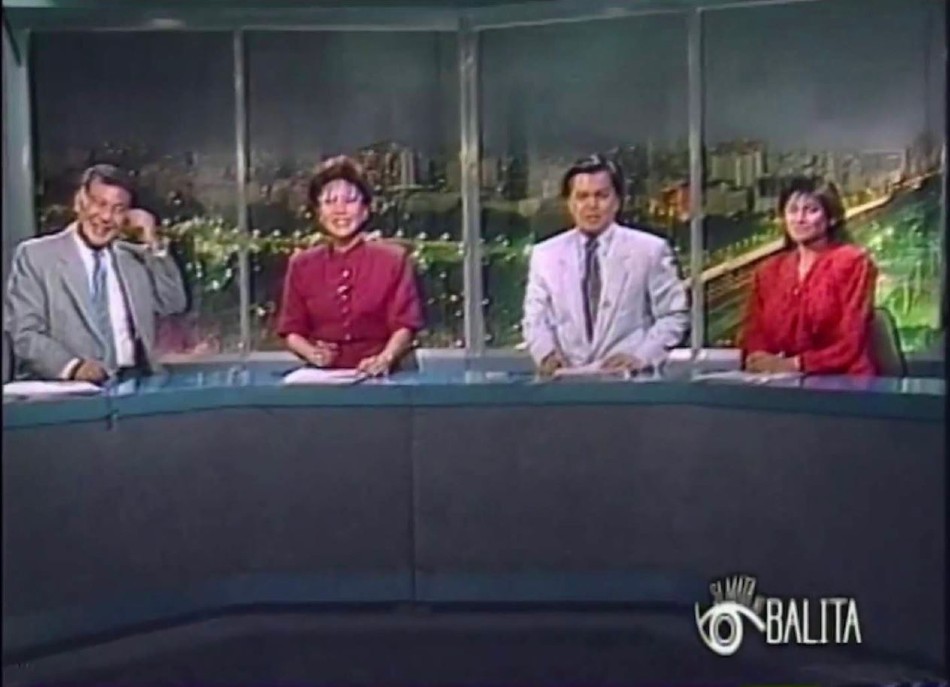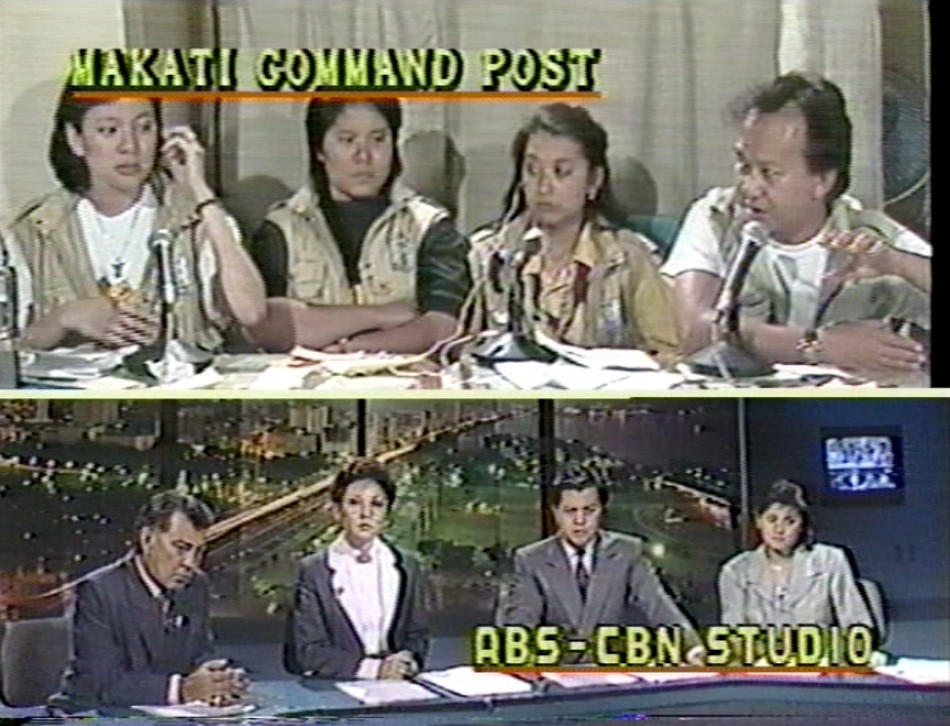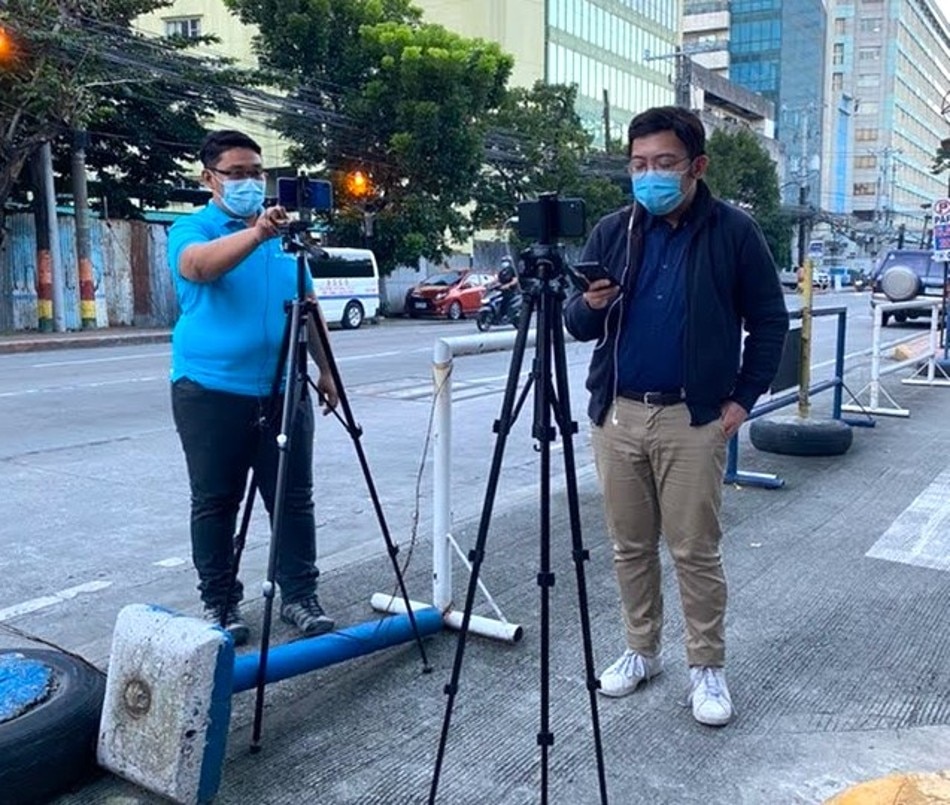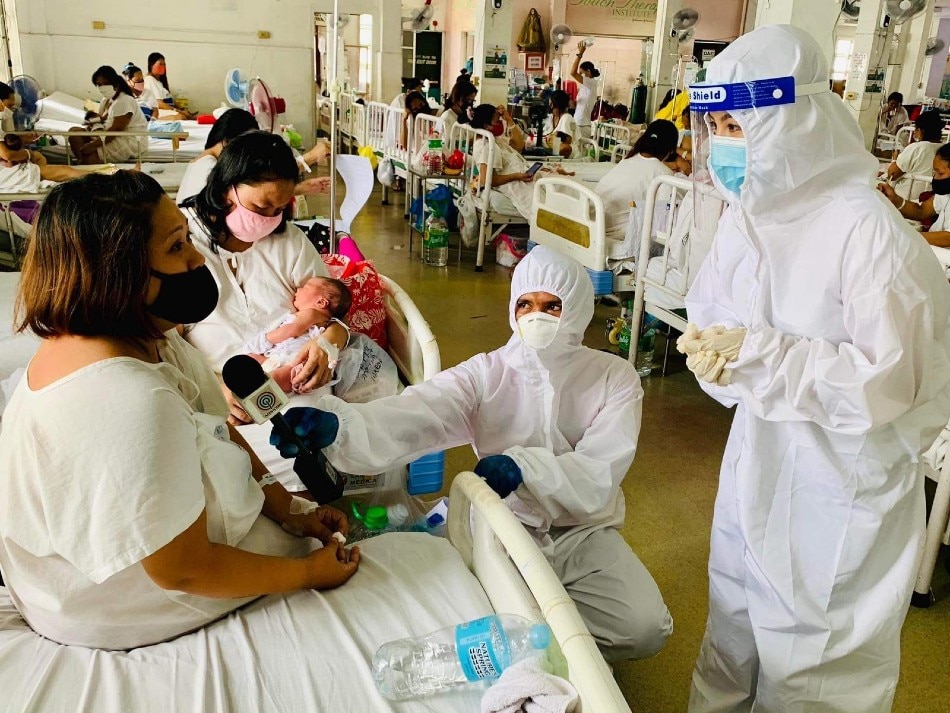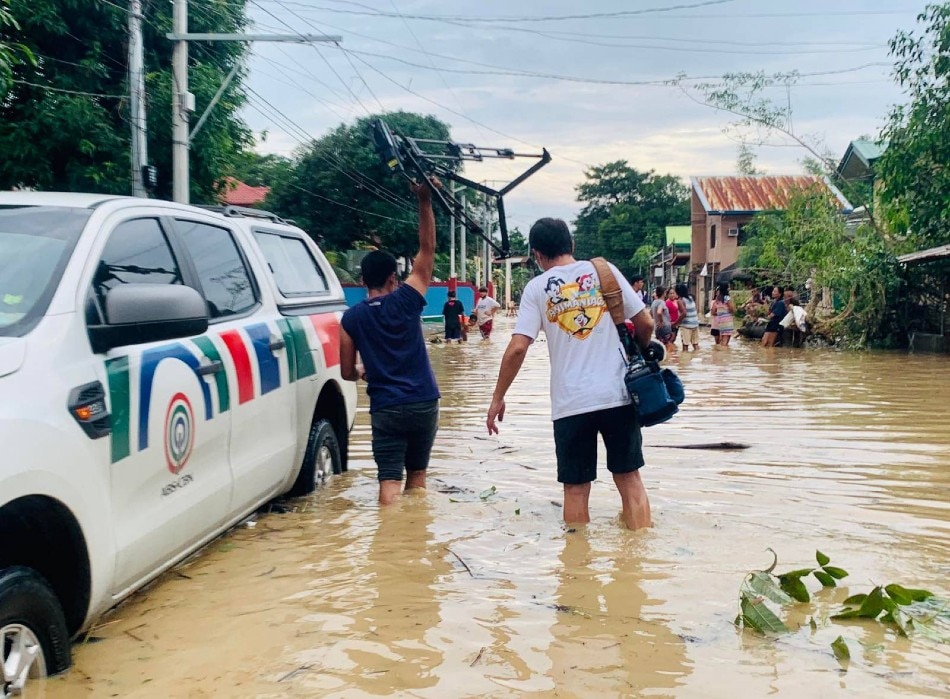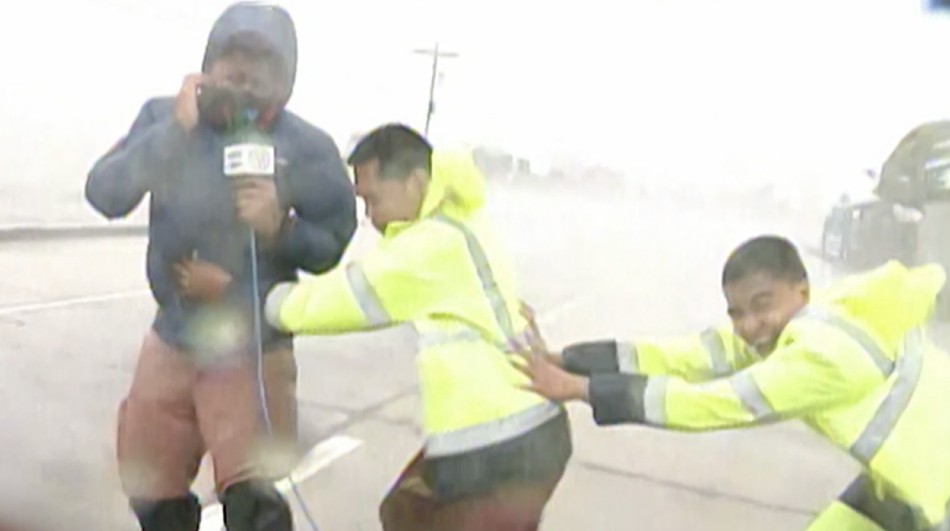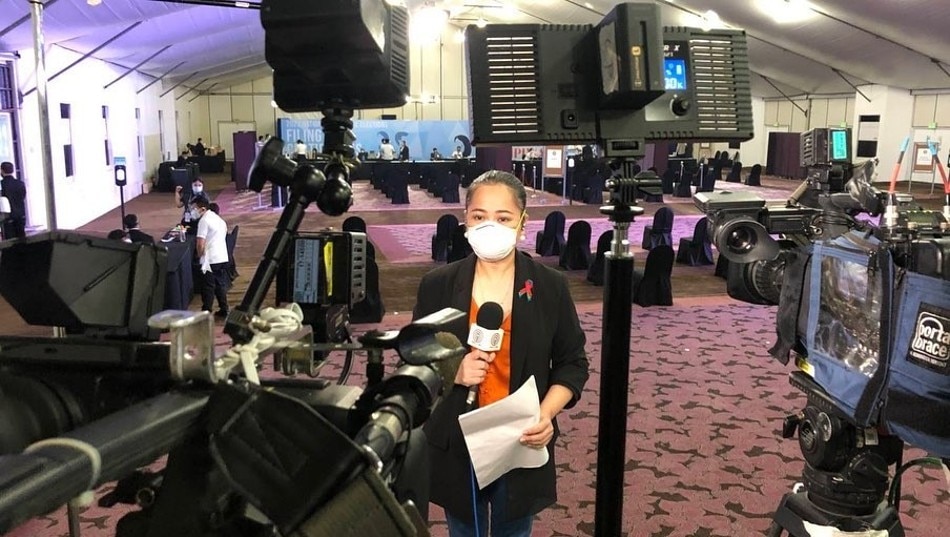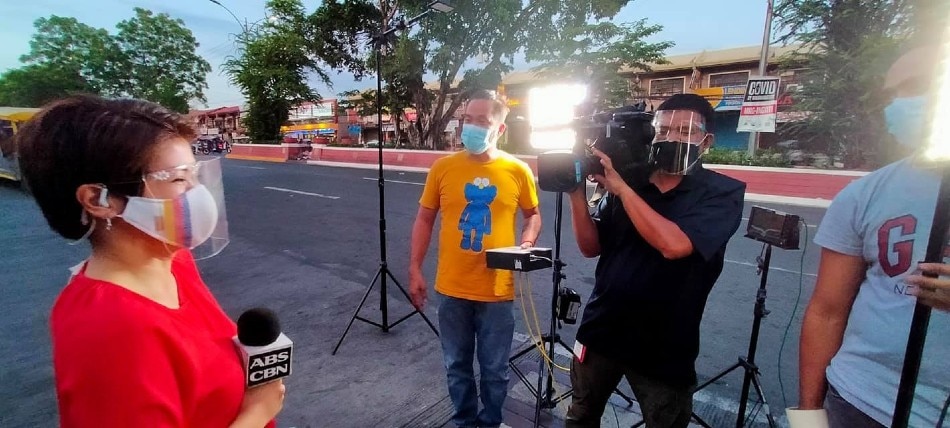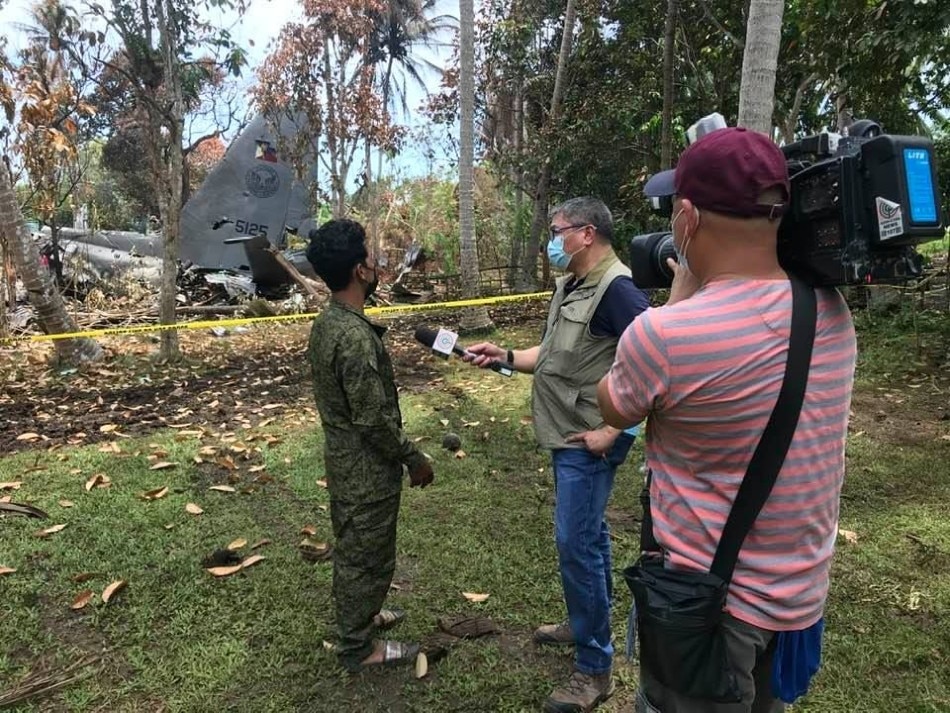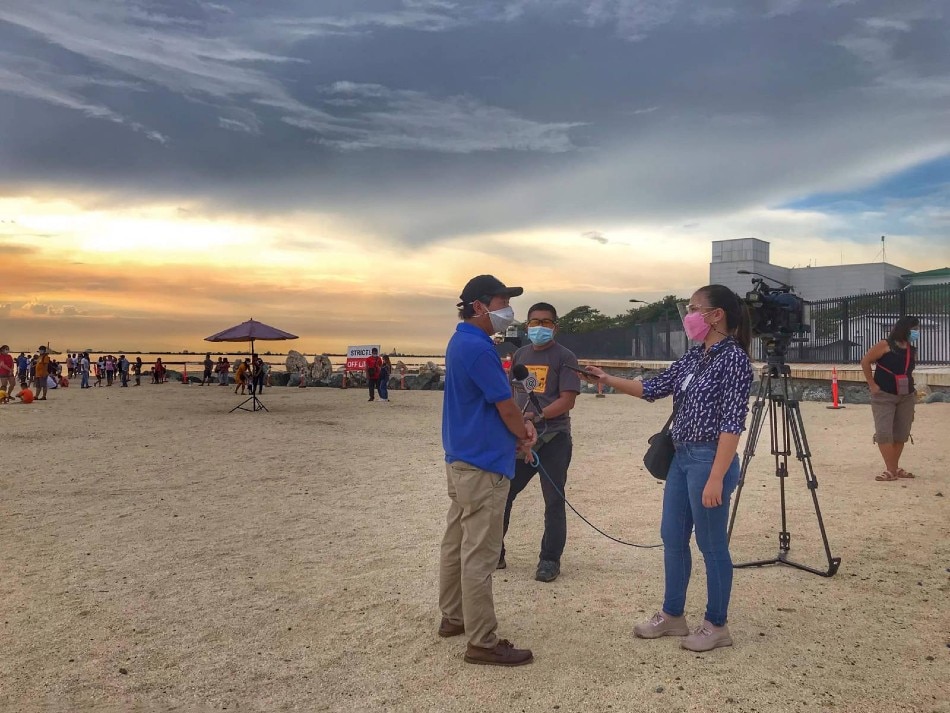How 'TV Patrol' evolved in 35 years | ABS-CBN
ADVERTISEMENT
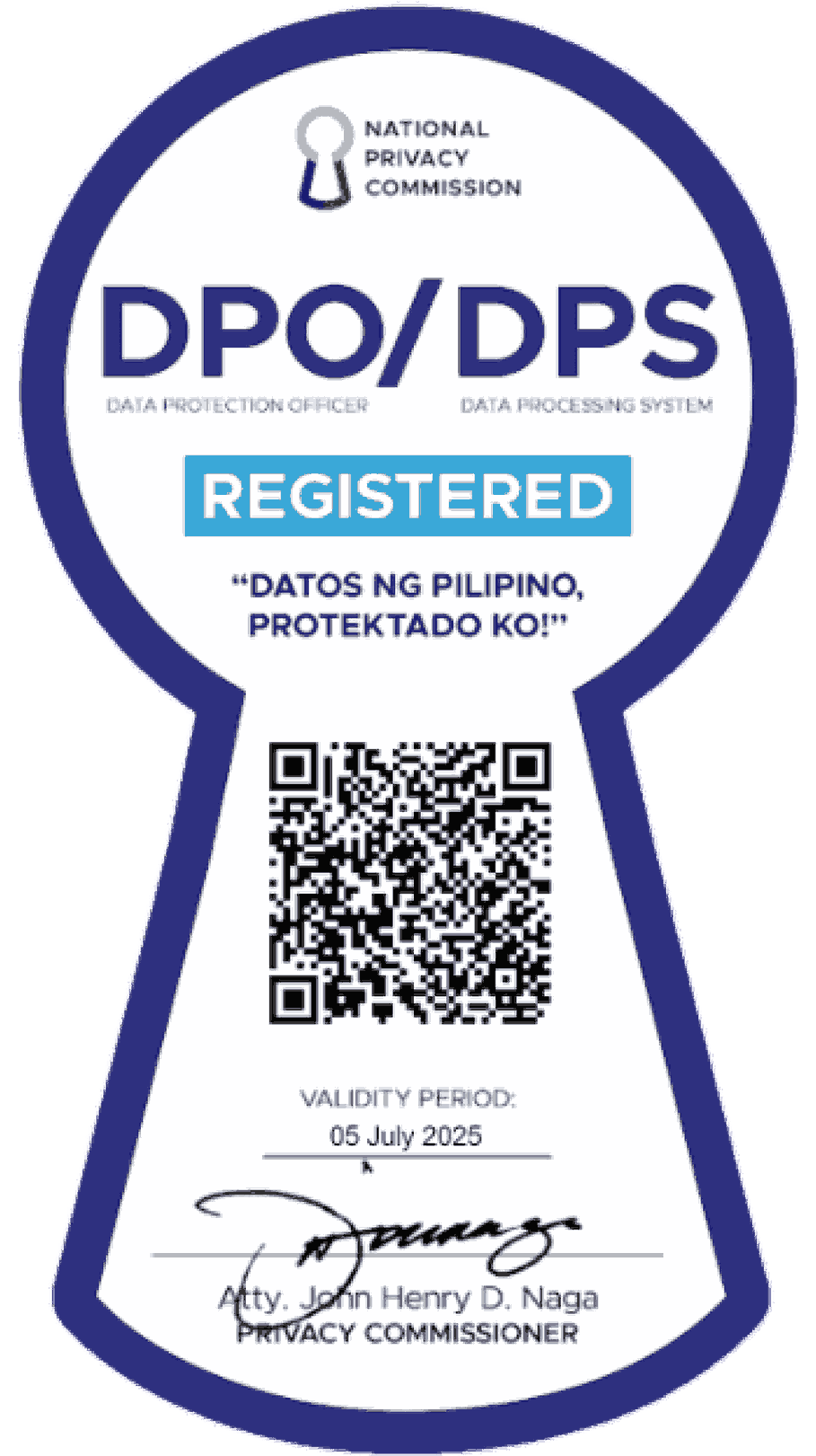
Welcome, Kapamilya! We use cookies to improve your browsing experience. Continuing to use this site means you agree to our use of cookies. Tell me more!
How 'TV Patrol' evolved in 35 years
How 'TV Patrol' evolved in 35 years
Anjo Bagaoisan,
ABS-CBN News
Published Mar 05, 2022 08:00 AM PHT
|
Updated Mar 05, 2022 12:58 PM PHT
MANILA -- From early-evening appointment viewing to digital on-demand news, "TV Patrol" has been going to where its viewers are for 35 years now, making it one of Philippine television's most enduring programs.
MANILA -- From early-evening appointment viewing to digital on-demand news, "TV Patrol" has been going to where its viewers are for 35 years now, making it one of Philippine television's most enduring programs.
After premiering at 6 p.m. on March 2, 1987 on the just-revived Channel 2, "TV Patrol" has been giving Filipinos front-row seat to nearly 4 decades of history through various media platforms.
After premiering at 6 p.m. on March 2, 1987 on the just-revived Channel 2, "TV Patrol" has been giving Filipinos front-row seat to nearly 4 decades of history through various media platforms.
With a name spun off from the network's long-running "Radyo Patrol," "TV Patrol" veered away from the formal broadsheet format that typified newscasts until then. It instead strove to resemble the media most ordinary Filipinos patronized: the tabloids and radio.
With a name spun off from the network's long-running "Radyo Patrol," "TV Patrol" veered away from the formal broadsheet format that typified newscasts until then. It instead strove to resemble the media most ordinary Filipinos patronized: the tabloids and radio.
The program is delivered in the language of the masses, Filipino, and sometimes, even in its colloquial variant.
The program is delivered in the language of the masses, Filipino, and sometimes, even in its colloquial variant.
ADVERTISEMENT
It combined "eyewitness news" and "action news," emphasizing actual video and on-site reports as well as including a dose of human interest and community news.
It combined "eyewitness news" and "action news," emphasizing actual video and on-site reports as well as including a dose of human interest and community news.
Along with the big events of the post-EDSA years, "TV Patrol" presented stories that dealt with the masses' daily lives and carried reports on crime, prices of commodities, weather, showbiz and sports.
Along with the big events of the post-EDSA years, "TV Patrol" presented stories that dealt with the masses' daily lives and carried reports on crime, prices of commodities, weather, showbiz and sports.
The newscast's creators — then-president Freddie Garcia, general manager Rolly Cruz, and news director Angelo Castro Jr. — reasoned it was time to give audiences the news they wanted and needed after decades of government-controlled news.
The newscast's creators — then-president Freddie Garcia, general manager Rolly Cruz, and news director Angelo Castro Jr. — reasoned it was time to give audiences the news they wanted and needed after decades of government-controlled news.
Before 1987 ended, the ratings proved them right. The hour-long "TV Patrol" had captured more than half the audience and helped ABS-CBN take the lead among the TV stations then.
Before 1987 ended, the ratings proved them right. The hour-long "TV Patrol" had captured more than half the audience and helped ABS-CBN take the lead among the TV stations then.
"TV Patrol" also attracted audiences with its magazine-like content. It had a public complaints portion, "Hoy, Gising!"; a segment devoted to discussing hot topics, "Pulso"; and features on oddities and human interest, "Balitang K."
"TV Patrol" also attracted audiences with its magazine-like content. It had a public complaints portion, "Hoy, Gising!"; a segment devoted to discussing hot topics, "Pulso"; and features on oddities and human interest, "Balitang K."
It pioneered a public service segment dubbed "Lingkod Bayan" that had the program not just reporting on natural disasters but also soliciting help on citizens' behalf.
It pioneered a public service segment dubbed "Lingkod Bayan" that had the program not just reporting on natural disasters but also soliciting help on citizens' behalf.
Viewers were engaged by the chemistry of the original anchors: Noli De Castro, Mel Tiangco, Frankie "Ka Kiko" Evangelista, and Angelique Lazo.
Viewers were engaged by the chemistry of the original anchors: Noli De Castro, Mel Tiangco, Frankie "Ka Kiko" Evangelista, and Angelique Lazo.
But it was the news reports of that tumultuous first decade that helped many Filipinos make sense of the times — whether it was Charie Villa rushing back to Manila via plane to report on the siege of Camp Cawa-Cawa in Zamboanga, Jing Magsaysay and others on the ground around Mount Pinatubo for weeks during its eruption, or Pia Hontiveros strapping herself to a flagpole outside PAGASA to show the strength of typhoon Rosing.
But it was the news reports of that tumultuous first decade that helped many Filipinos make sense of the times — whether it was Charie Villa rushing back to Manila via plane to report on the siege of Camp Cawa-Cawa in Zamboanga, Jing Magsaysay and others on the ground around Mount Pinatubo for weeks during its eruption, or Pia Hontiveros strapping herself to a flagpole outside PAGASA to show the strength of typhoon Rosing.
CHANGE, EXPANSION
Well into the 1990s, it was "TV Patrol" and not a soap opera or variety show that was the number 1 show on Philippine television, an anomaly even by overseas standards. A foreign documentarist described the program's viewership as "figures program managers anywhere in the world would kill for."
Well into the 1990s, it was "TV Patrol" and not a soap opera or variety show that was the number 1 show on Philippine television, an anomaly even by overseas standards. A foreign documentarist described the program's viewership as "figures program managers anywhere in the world would kill for."
Striving to maintain its lead, adjustments were made and the newscast was cut down to 30 minutes in 1996, leaving only "Kabayan" Noli De Castro at the helm.
Striving to maintain its lead, adjustments were made and the newscast was cut down to 30 minutes in 1996, leaving only "Kabayan" Noli De Castro at the helm.
The "TV Patrol" segments spawned their own top-rating shows, among them the special reports from De Castro’s Investigative Group and the light news of Marc Logan that served as breather from serious news.
The "TV Patrol" segments spawned their own top-rating shows, among them the special reports from De Castro’s Investigative Group and the light news of Marc Logan that served as breather from serious news.
De Castro’s eventual run for the Senate and the vice presidency brought in new blood to the anchor desk. Korina Sanchez, Henry Omaga-Diaz, Aljo Bendijo, Julius Babao, Ted Failon, and Karen Davila became TV Patrol's anchors in the next decade.
De Castro’s eventual run for the Senate and the vice presidency brought in new blood to the anchor desk. Korina Sanchez, Henry Omaga-Diaz, Aljo Bendijo, Julius Babao, Ted Failon, and Karen Davila became TV Patrol's anchors in the next decade.
Starting with "TV Patrol Cebu" in 1988, the provincial stations of ABS-CBN’s Regional Network Group from Luzon to Mindanao created up to a dozen "TV Patrol" newscasts in the local tongue.
Starting with "TV Patrol Cebu" in 1988, the provincial stations of ABS-CBN’s Regional Network Group from Luzon to Mindanao created up to a dozen "TV Patrol" newscasts in the local tongue.
The newscast would later cross borders and become one of the main sources of news for Filipinos around the world via The Filipino Channel or TFC.
The newscast would later cross borders and become one of the main sources of news for Filipinos around the world via The Filipino Channel or TFC.
By 2004, "TV Patrol" had a weekend edition that carried reportage beyond the weekdays for continued coverage of news such as President Gloria Arroyo’s declaration of a state of emergency, the death of former President Corazon Aquino, and the onslaught of typhoons Ondoy and Sendong.
By 2004, "TV Patrol" had a weekend edition that carried reportage beyond the weekdays for continued coverage of news such as President Gloria Arroyo’s declaration of a state of emergency, the death of former President Corazon Aquino, and the onslaught of typhoons Ondoy and Sendong.
CREATING A COMMUNITY OF 'PATROLLERS'
As the audience picked up on the popularity of mobile phones and social media, viewers became more involved and began to take part in public service and reporting.
As the audience picked up on the popularity of mobile phones and social media, viewers became more involved and began to take part in public service and reporting.
Along with the newscast's relaunch as “TV Patrol World” in 2004 came "Citizen Patrol," a grassroots take on the original "Hoy, Gising!" where the viewers themselves tell stories—and take action—about issues in their community.
Along with the newscast's relaunch as “TV Patrol World” in 2004 came "Citizen Patrol," a grassroots take on the original "Hoy, Gising!" where the viewers themselves tell stories—and take action—about issues in their community.
The 2007 and 2010 elections would bring in more citizen reports via the "Boto Mo, iPatrol Mo" that later became "Bayan Mo, I-Patrol Mo" or BMPM and these reports would be regular content on "TV Patrol."
The 2007 and 2010 elections would bring in more citizen reports via the "Boto Mo, iPatrol Mo" that later became "Bayan Mo, I-Patrol Mo" or BMPM and these reports would be regular content on "TV Patrol."
Through pictures anonymously sent to BMPM in 2009 , ABS-CBN News was able to get wind of what would be known as the Maguindanao or Ampatuan Massacre, considered the single deadliest event for journalists in history.
Through pictures anonymously sent to BMPM in 2009 , ABS-CBN News was able to get wind of what would be known as the Maguindanao or Ampatuan Massacre, considered the single deadliest event for journalists in history.
The return and coming together of "TV Patrol’s" big 3 anchors—De Castro, Sanchez, and Failon—in late 2010 included an SMS-based opinion poll reminiscent of the old “Pulso” that ran throughout the program and ended with banter among the anchors.
The return and coming together of "TV Patrol’s" big 3 anchors—De Castro, Sanchez, and Failon—in late 2010 included an SMS-based opinion poll reminiscent of the old “Pulso” that ran throughout the program and ended with banter among the anchors.
Earlier that year, "TV Patrol" officially joined the digital space by launching its Facebook and Twitter pages. These would be among the biggest news publishers years later.
Earlier that year, "TV Patrol" officially joined the digital space by launching its Facebook and Twitter pages. These would be among the biggest news publishers years later.
It also opened its own website that ran a live stream for viewers in the Philippines accompanied by a chatroom, years before live streaming and commenting became a staple of social media.
It also opened its own website that ran a live stream for viewers in the Philippines accompanied by a chatroom, years before live streaming and commenting became a staple of social media.
These forays helped form communities among those who wanted to consume "TV Patrol" online and those who wanted to play a part in the news they were watching.
These forays helped form communities among those who wanted to consume "TV Patrol" online and those who wanted to play a part in the news they were watching.
Whether they were "TVPeeps" or "Bayan Patrollers," it was clear they were no longer the passive viewers the newscast first catered to.
Whether they were "TVPeeps" or "Bayan Patrollers," it was clear they were no longer the passive viewers the newscast first catered to.
SHUTDOWN AND A NEW CHAPTER
When ABS-CBN’s free-to-air broadcast channel was forced to shut down on May 5, 2020, De Castro's closing statement on TV Patrol would be the last live words audiences heard on Channel 2 before it signed off. It was written by pioneer TV Patrol production assistant and now Integrated News chief Ging Reyes.
When ABS-CBN’s free-to-air broadcast channel was forced to shut down on May 5, 2020, De Castro's closing statement on TV Patrol would be the last live words audiences heard on Channel 2 before it signed off. It was written by pioneer TV Patrol production assistant and now Integrated News chief Ging Reyes.
It was not the last of "TV Patrol."
It was not the last of "TV Patrol."
Two days after the shutdown, the newscast was back -- on news channels ANC and TeleRadyo, global platform TFC, and live streamed on Facebook and YouTube.
Two days after the shutdown, the newscast was back -- on news channels ANC and TeleRadyo, global platform TFC, and live streamed on Facebook and YouTube.
It was back on free TV again via the A2Z Channel on January 3, 2022.
It was back on free TV again via the A2Z Channel on January 3, 2022.
De Castro, a mainstay for 25 years, bid farewell in October 2021 to run for the Senate. But he did not push through with his run and instead returned to his first love, radio.
De Castro, a mainstay for 25 years, bid farewell in October 2021 to run for the Senate. But he did not push through with his run and instead returned to his first love, radio.
The current crop of "TV Patrol" anchors include Henry Omaga-Diaz, Bernadette Sembrano, and Karen Davila. They are joined by Marc Logan, Gretchen Fullido, Boyet Sison, Winnie Cordero, and Migs Bustos for the special segments. Resident meteorologist Ariel Rojas reports the weather.
The current crop of "TV Patrol" anchors include Henry Omaga-Diaz, Bernadette Sembrano, and Karen Davila. They are joined by Marc Logan, Gretchen Fullido, Boyet Sison, Winnie Cordero, and Migs Bustos for the special segments. Resident meteorologist Ariel Rojas reports the weather.
Meanwhile the COVID-19 pandemic prompted adjustments in news gathering and reportage, providing yet again another milestone in the "TV Patrol" evolution.
Meanwhile the COVID-19 pandemic prompted adjustments in news gathering and reportage, providing yet again another milestone in the "TV Patrol" evolution.
Read More:
TV Patrol
TV Patrol 35
ABS-CBN News
TV Patrol history
journalism
ABS-CBN
Noli De Castro
Korina Sanchez
Ted Failon
Henry Omaga-Diaz
ADVERTISEMENT
ADVERTISEMENT



